Epiphyllum is a genus of epiphytic flowering cacti, numbering about 20 species, differing in the form of shoots and the color of the flowers. In the wild, the plant can be found in the tropical and subtropical regions of America. The first representative of the genus was described at the beginning of the 19th century by English botanists A. Haworth.
The plant does not have full leaves. What is commonly called leaf blades, in reality, are modified shoots on which lush buds, mainly white, appear during flowering. Epiphyllum has been grown at home for many years, because caring for it is not complicated, and its lush flowers, which can be seen in the photo, can decorate any interior.
Content
Variety characteristics and species diversity
Epiphyllum is a genus of flowering succulent plants belonging to the Cactus family. Long curly or creeping shoots of cactus allow you to grow it as an ampel plant. The shape of the shoots depends on the plant variety. Cacti are found with flat, trihedral or wavy stems. As it grows, the base of its shoots begins to become covered with bark. Fleshy saturated green shoots are often mistaken for leaf plates, but real leaves look like medium-sized scales that are located under the areoles of the shoots.
Large funnel-shaped flowers appear on the tops of shoots and can have a wide variety of colors. The most common cacti with white or cream buds. The flowers exude a rather strong rich aroma. Due to its lush flowering, the plant received its popular name - "cactus-orchid".
Cross-pollination of a flower leads to the appearance of large fruits with edible flesh. Outwardly, the fruits look like a plum of yellow-green or purple color. Often the surface of the fetus is covered with thorns. The juicy pulp of the fruit has a strawberry-pineapple taste and a sweet aroma. Inside the pulp are small black seeds that can be used for propagation.
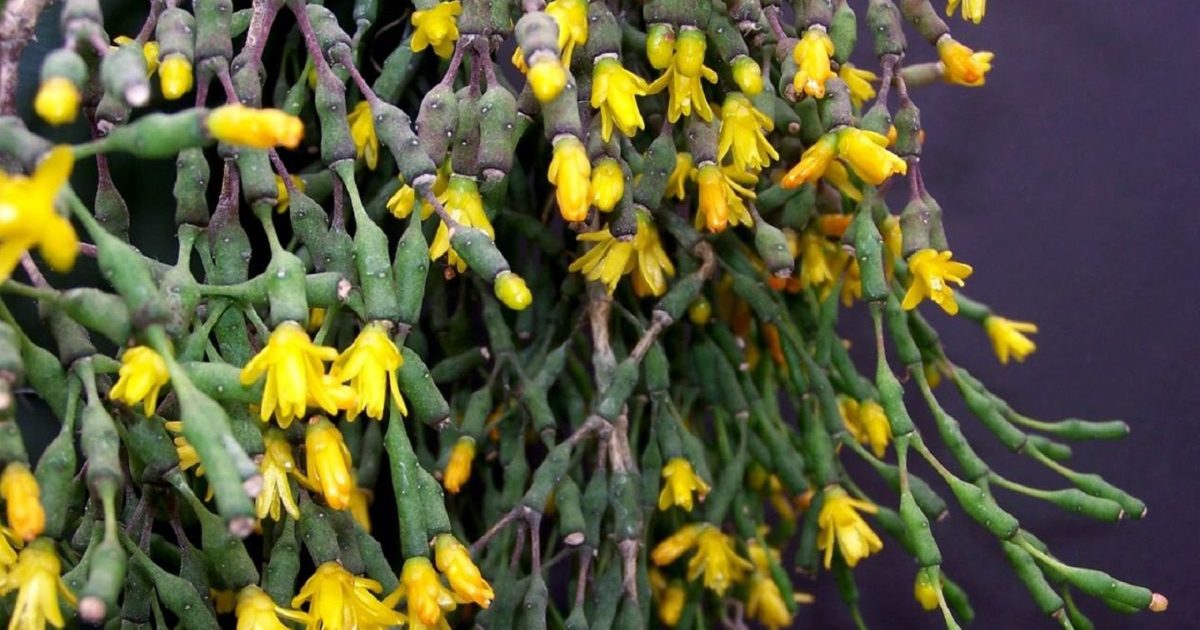 You may be interested in:
You may be interested in:Angular
The epiphyllum is angular, or anguliger - a cactus of a bushy type with lodging stems of green color. The edges of the shoots have deep angular recesses, thanks to which the plant got its name. The length of strongly branched shoots can reach 1 m. The rounded or trihedral lower part of the stem upwards begins to acquire a flat or triangular shape.
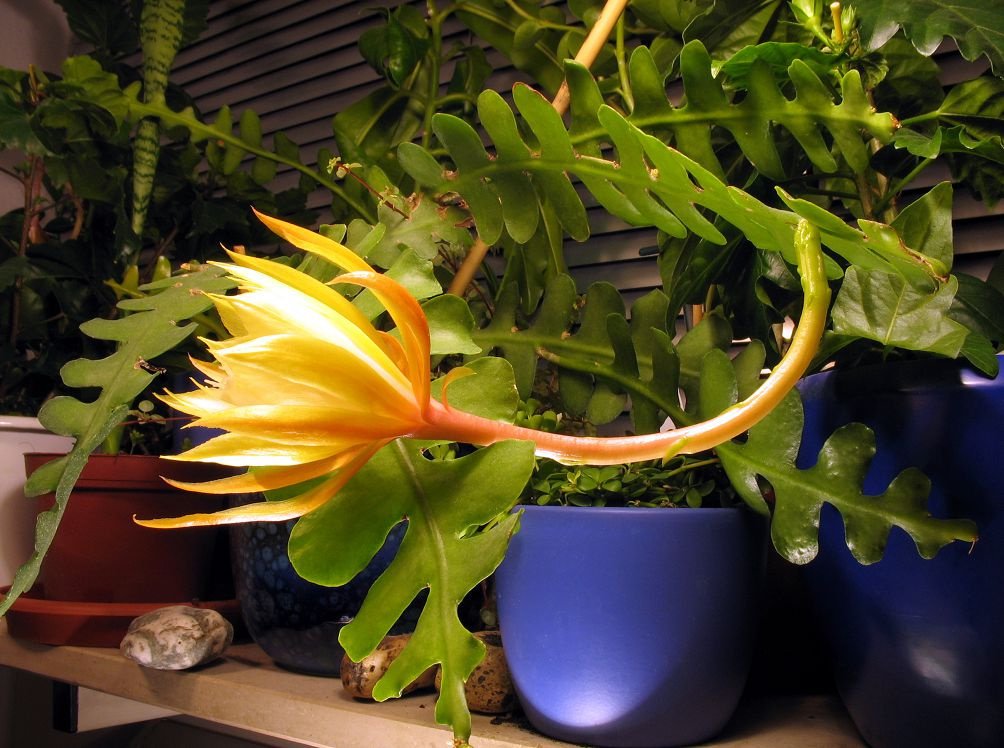
Needles are almost completely absent on the surface of the cactus, instead of which bristly villi are present on the areoles. Flowering time occurs in the summer - large white buds appear, exuding a delicate pleasant aroma. However, there are varieties with yellow or pink blooms. The diameter of fragrant flowers can reach 15 cm.
Fish bone
Fish bone, or forest cactus, differs from its relatives in a peculiar form of stems, which resembles a fish ridge.Deep recesses are located along the entire length of the shoot. Flat shoots of plants grow up to 1 m in length and up to 15 cm in width. Small scaly leaves are located at the base of the shoots.
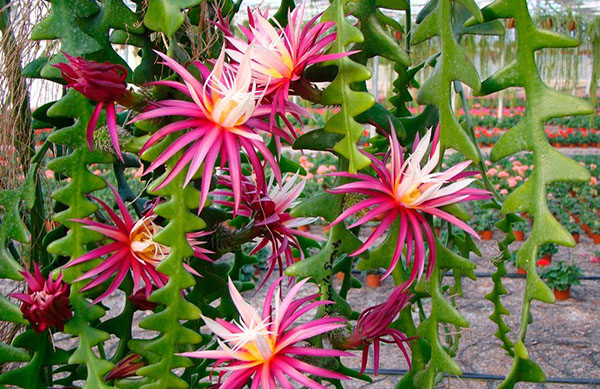
With proper care, large voluminous flowers of raspberry color with a yellow base and a white flower tube appear on the surface of green shoots. As the bud opens, the satin petals bend outward. The diameter of the bud, as a rule, is 13-15cm. Lush flowering can last up to several months. The long flowing stems of the cactus allow it to be grown in hanging planters.
Oxypetalum
Variety with long flexible stems of a rod-shaped form. Flat green shoots have wavy edges. Tubular white inflorescences appear at the ends of shoots at night. The flowering season is summer.

Guatemalan
The species is represented by two varieties that differ in the shape of shoots. The shoots of the first grade have the form of a kind of chain with links when the shoots of the second grow in a derivative order and do not have partitions. The flowers are small, pinkish shades.
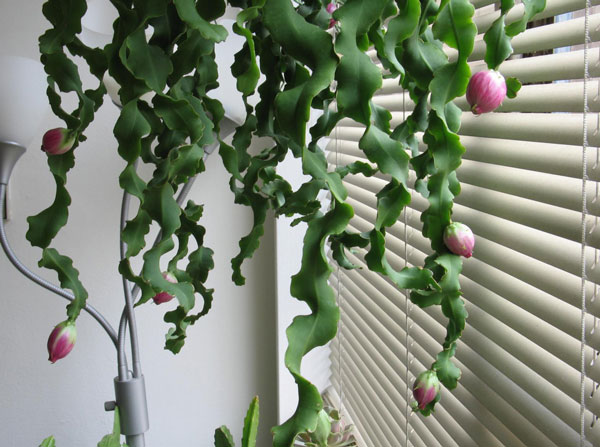
Ackerman
One of the most popular representatives of the genus. Reddish buds sitting on thin peduncles retain their decorative effect for a long time. Jagged shoots grow quite slowly, which is a great advantage for potting.
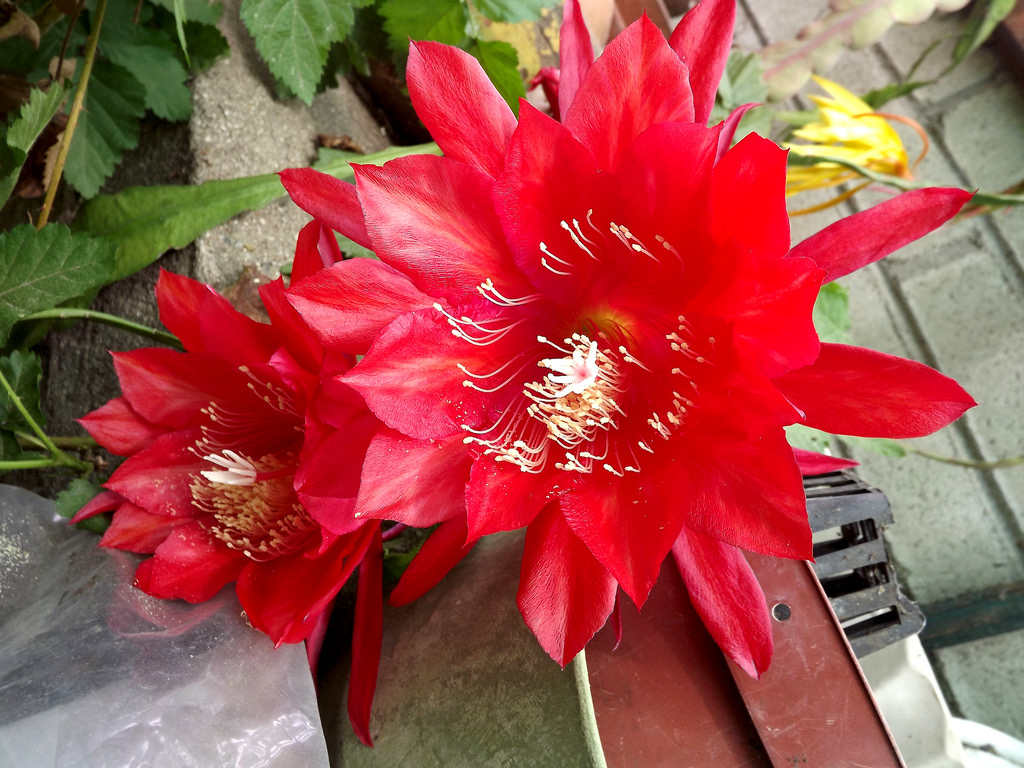
Pointed
It differs from most of its relatives by short erect stems of light green color. At night, fragrant flowers of white or cream color appear on the shoots.
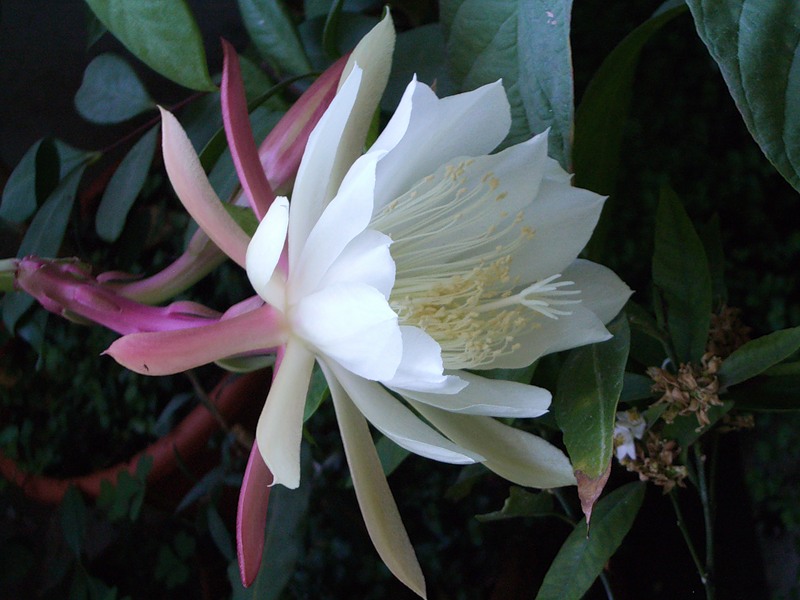
Philanthus
Primary and secondary stems of the bush differ significantly in length. So the primary shoots grow to 1 m, when the length of the secondary does not exceed even 50 cm. The color of the buds is pink.
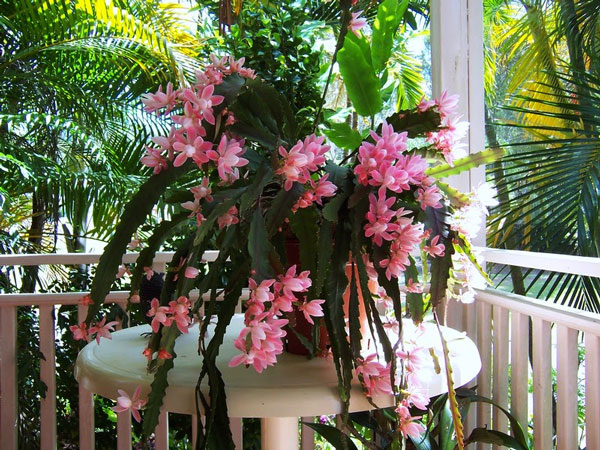
Hooker
Rigid arched stems of the plant may wilt under the weight of large white flowers. Buds with elongated petals are located on thin flexible peduncles. The core of the bud is fluffy.
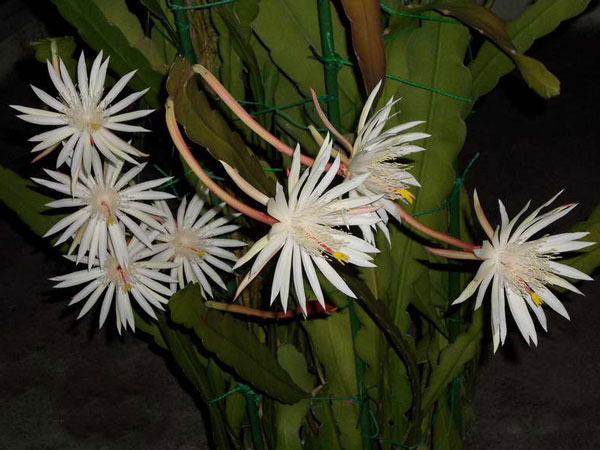
Jagged
Fleshy flat stalks of a cactus have a blue-green color. There are no needles on the surface of jagged shoots. There are varieties with cream, yellow, white and pink flowers.
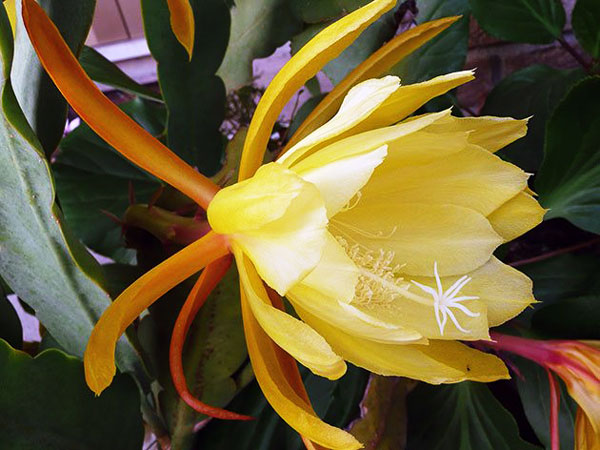
Lau
Fast-growing shrub with cream flowers. The buds that open at night retain their decorative effect for no more than 2 days.

Just pru
A hybrid cactus variety that quickly adapts to the conditions of detention. Blooms in large pink buds in the spring season.

Thomas
In the wild, the length of the cactus stalks can reach 4 m, but indoors they rarely grow even up to 70 cm. The diameter of white flowers with a bright yellow core is about 25 cm.
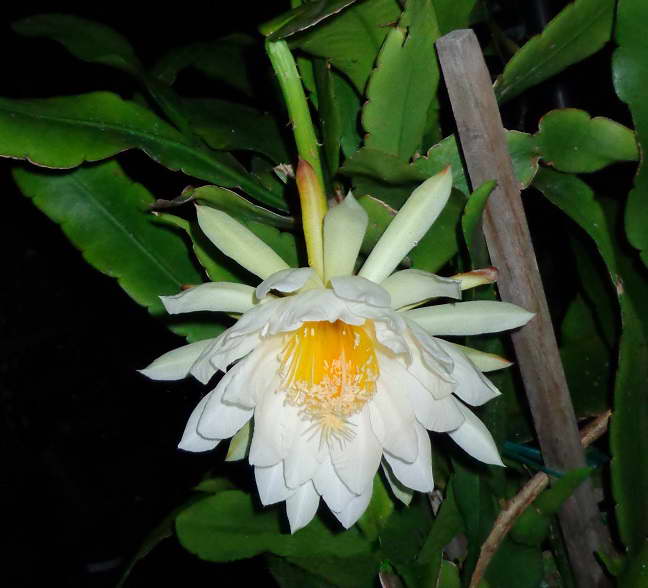
Rules for caring for epiphyllum at home
Growing epiphyllum indoors is a fairly easy task that even an inexperienced grower will cope with. The cactus does not belong to the finicky pottery crops and quite easily adapts to the surrounding conditions.
Lighting
The bush needs good and bright lighting, otherwise, it is unlikely to enjoy its lush flowering. However, do not allow direct sunlight to hit the ground part of the plant, as this can lead to burns. Therefore, when choosing a place to place a decorative culture, it is better to stay on the eastern or western windowsills. Such a location will provide the bush with an optimal amount of light and protect it from the direct action of ultraviolet radiation.
Temperature and humidity
The temperature at which it is recommended to keep the bush depends on the season.This is due to the fact that a cactus needs a rest period to restore strength after flowering. During the active growing season, the bush must be grown at a temperature of 20 to 25 ° C, and with the onset of cold weather, it is recommended that the temperature in the room with a flower be lowered to 10-15 ° C.
The plant is absolutely not demanding on air humidity. However, in particularly hot periods, it is recommended that the ground part of the bush be sprayed with a spray gun. For spraying, it is better to use well-defended water at room temperature. In the process of spraying, it is important to prevent water from getting on the buds, otherwise they will quickly lose their decorative effect.
Watering and feeding
From spring to the end of summer, the plant needs regular and plentiful watering with “soft” water. The temperature of water for irrigation should be slightly lower than the temperature in the room. It is better to water the bush after the top layer of soil dries out a little.
During the period of active growth, it is recommended to fertilize the flower 1 time in 10-14 days. As a top dressing, it is best to use special fertilizers for flowering cacti. During budding and after flowering, the cactus must be fed with cow manure diluted in water in a ratio of 1: 4.
Epiphyllum Diseases and Pests
Improper care of the flower significantly reduces its protective functions and causes various diseases and pests. Most often, the plant is affected by such diseases:
- Rust. Stagnation of moisture in the soil or sunburn leads to rust. The disease manifests itself in the form of unformed rust spots on the shoots of a bush. You can clearly see the manifestation of the disease from the photo. Treatment includes maintaining optimal conditions and treatment with fungicides.
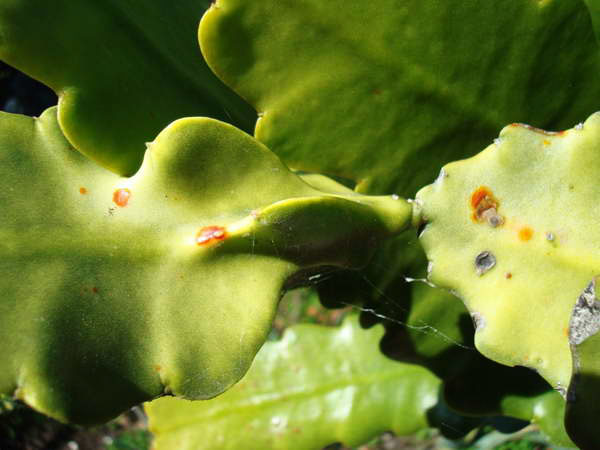
Rust - Anthracnose. It appears in the form of light brown spots on the shoots of a bush. Treatment: pruning the affected stems and treating the plant with a fungicide.
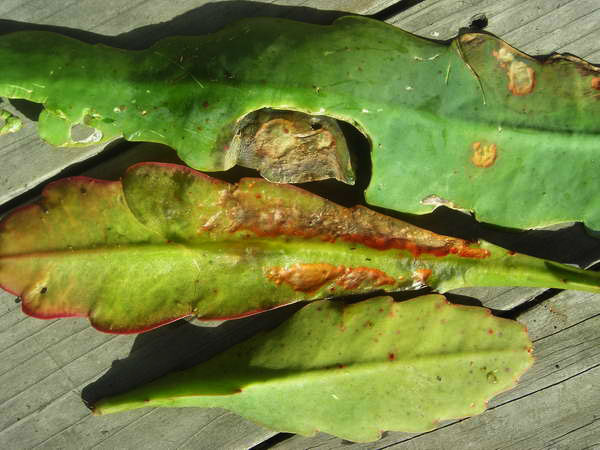
Anthracnose - Viral mosaic. White spots appear on the stem and dried tips. With a severe defeat, a rapid drop in buds is observed. The virus is practically not treated, so it is better to get rid of the diseased plant.
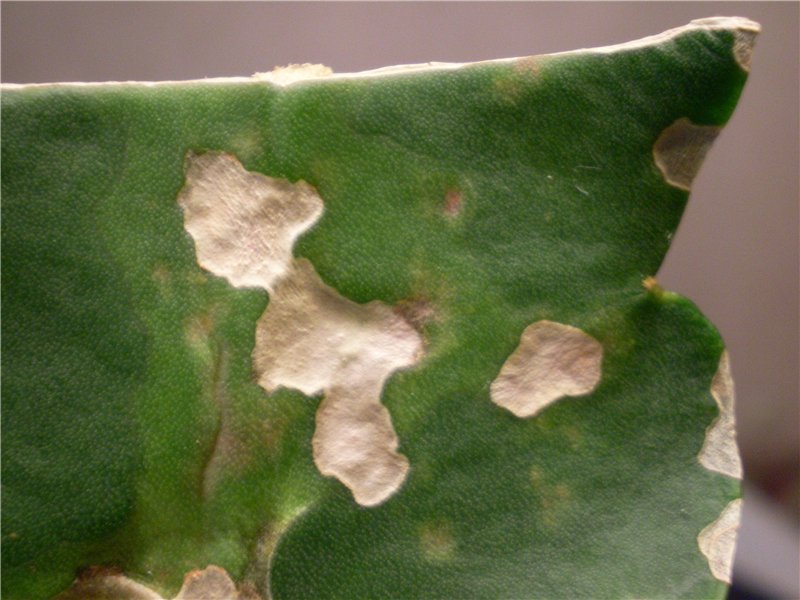
Viral Mosaic - Fusarium This is a fungal infection that affects the root system of the flower and causes redness of the shoots. The cause of infection is waterlogging. The flower can be cured only by removing all rotten roots and transplanting into a new container.
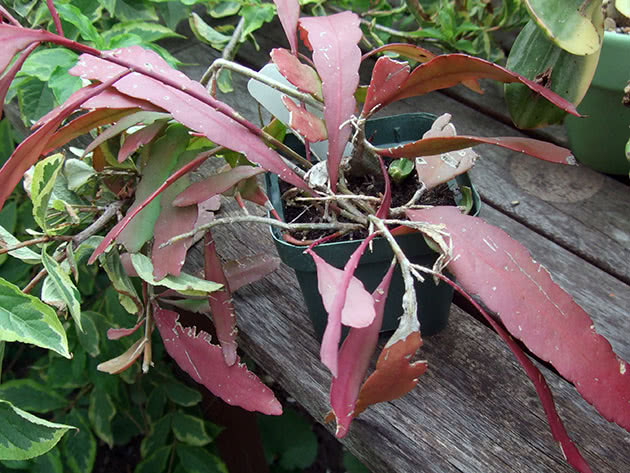
Fusarium
The bush is also attacked by harmful insects, including:
- Spider mite. You can detect the insect by the thin web that strengthens the cactus. Most often, the cause of the parasite is too dry air in the room. The insect sucks the juice from the shoots of the plant and disrupts its normal life processes. Insecticides are used to combat parasites.
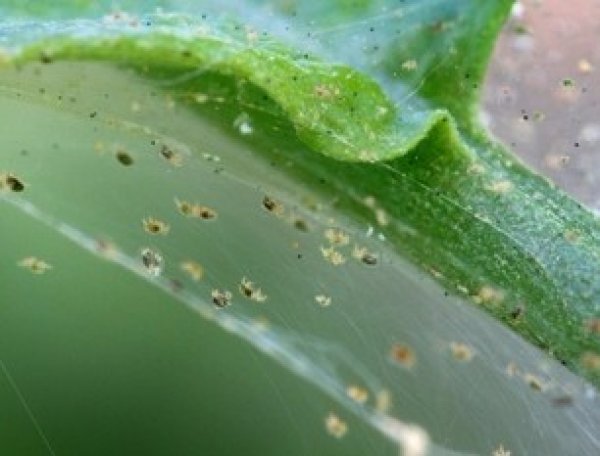
Spider mite - Scaffolds. Small sucking insects that deprive the plant of vital juices. Parasites are removed manually, and only after that the cactus is treated with systemic insecticides.
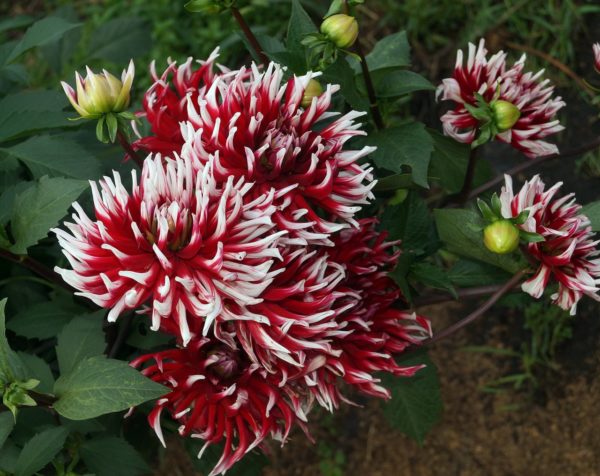 You may be interested in:
You may be interested in:Ways to grow epiphyllum at home
Epiphyllum propagates in several ways, namely, cuttings, dividing the bush and seeds.
Growing a cactus from seeds is a rather laborious process and a plant obtained in this way will bloom no earlier than 5 years later. It is recommended to start sowing seeds in the spring. Planting material is evenly sown on the surface of a moist substrate for cacti and covered with a plastic film.
There is no need to deepen the seeds deep, just immerse them in the soil by 5 mm. Crop care includes regular spraying and airing.
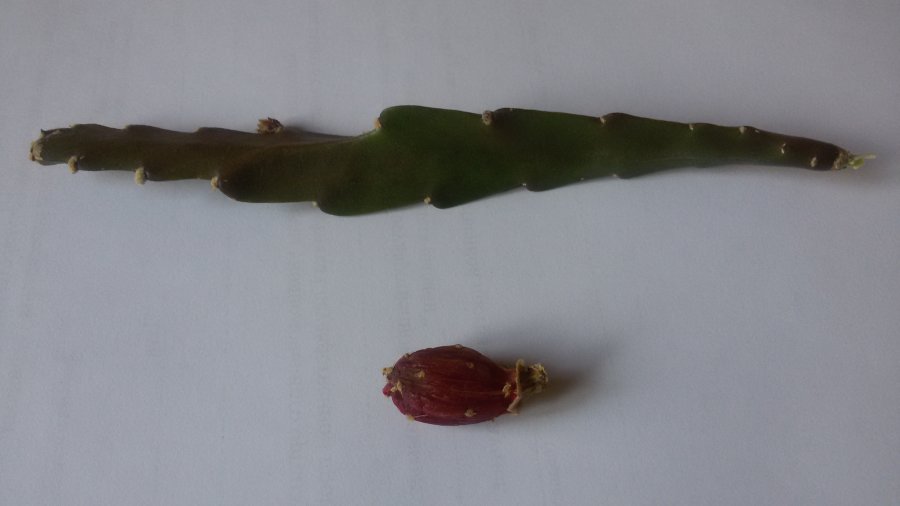
Reproduction by dividing the bush is the fastest and most reliable way to get a new plant. You can resort to this method during an adult transplant. It is enough to divide the bush into 2 parts and plant them in separate containers. During adaptation, the plant is better kept in partial shade, and the number of irrigations is minimized.
Cuttings are also a fairly simple way to propagate the mother plant. It is recommended to start rooting cuttings in the spring. Pieces of young and healthy shoots with a length of 10 to 15 cm are used as cuttings.
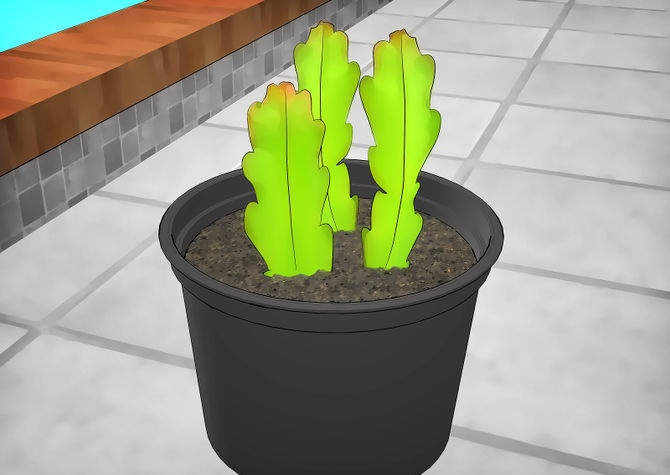
Cuttings are placed for several days in an empty container with the cut down so that they can release juice. After they are deepened by 1-2 cm in an earthen substrate for rooting. The container with them is recommended to be kept in partial shade. Rooted cuttings are transplanted into small pots, with a depth of 7 to 10 cm.
For rooting, you can use both purchased soil for cacti, and prepared independently from turf, sheet soil and sand, taken in a ratio of 2: 1: 1.
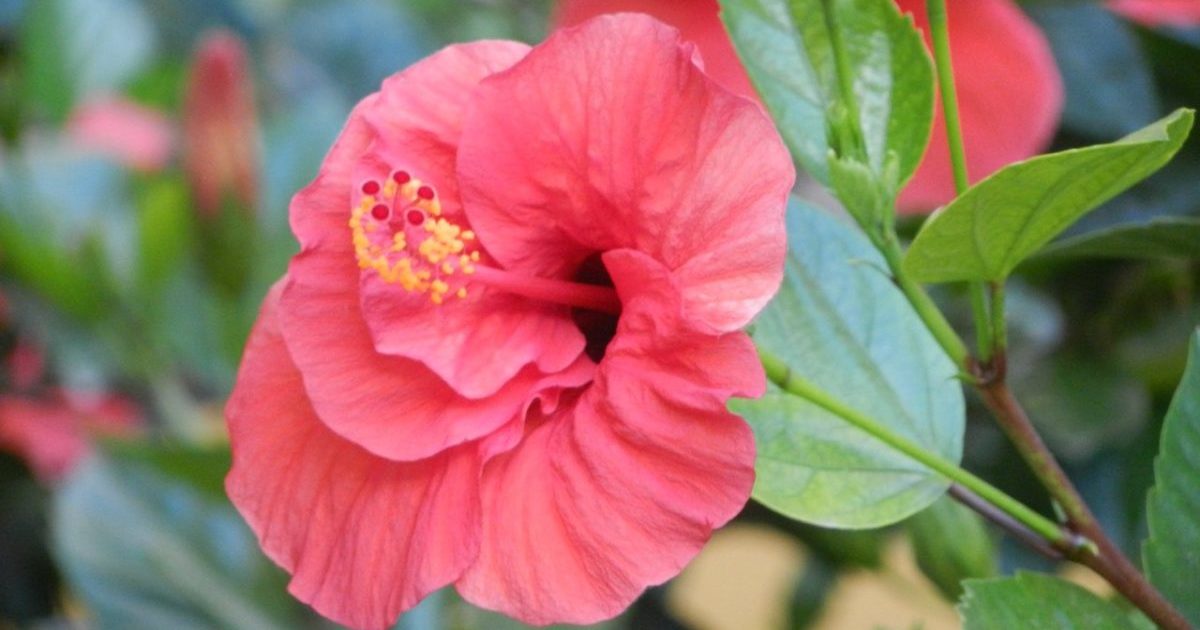 You may be interested in:
You may be interested in:Common questions
Epiphyllums are beautifully flowering cacti that, thanks to their decorative appearance and unpretentiousness, have been grown as a pot culture for many years.



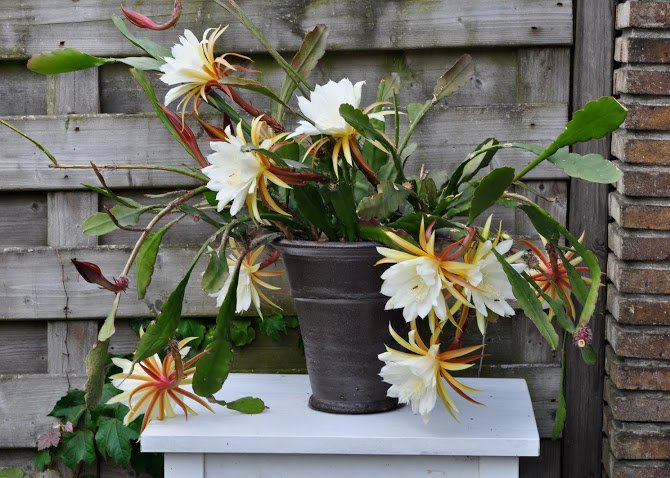



 10 beautiful annuals that bloom all summer
10 beautiful annuals that bloom all summer Sow in the ground, without seedlings: 10 beautiful and unpretentious flowers
Sow in the ground, without seedlings: 10 beautiful and unpretentious flowers Platicodon planting and outdoor care
Platicodon planting and outdoor care Hosta - planting and care in the open ground in the Urals
Hosta - planting and care in the open ground in the Urals